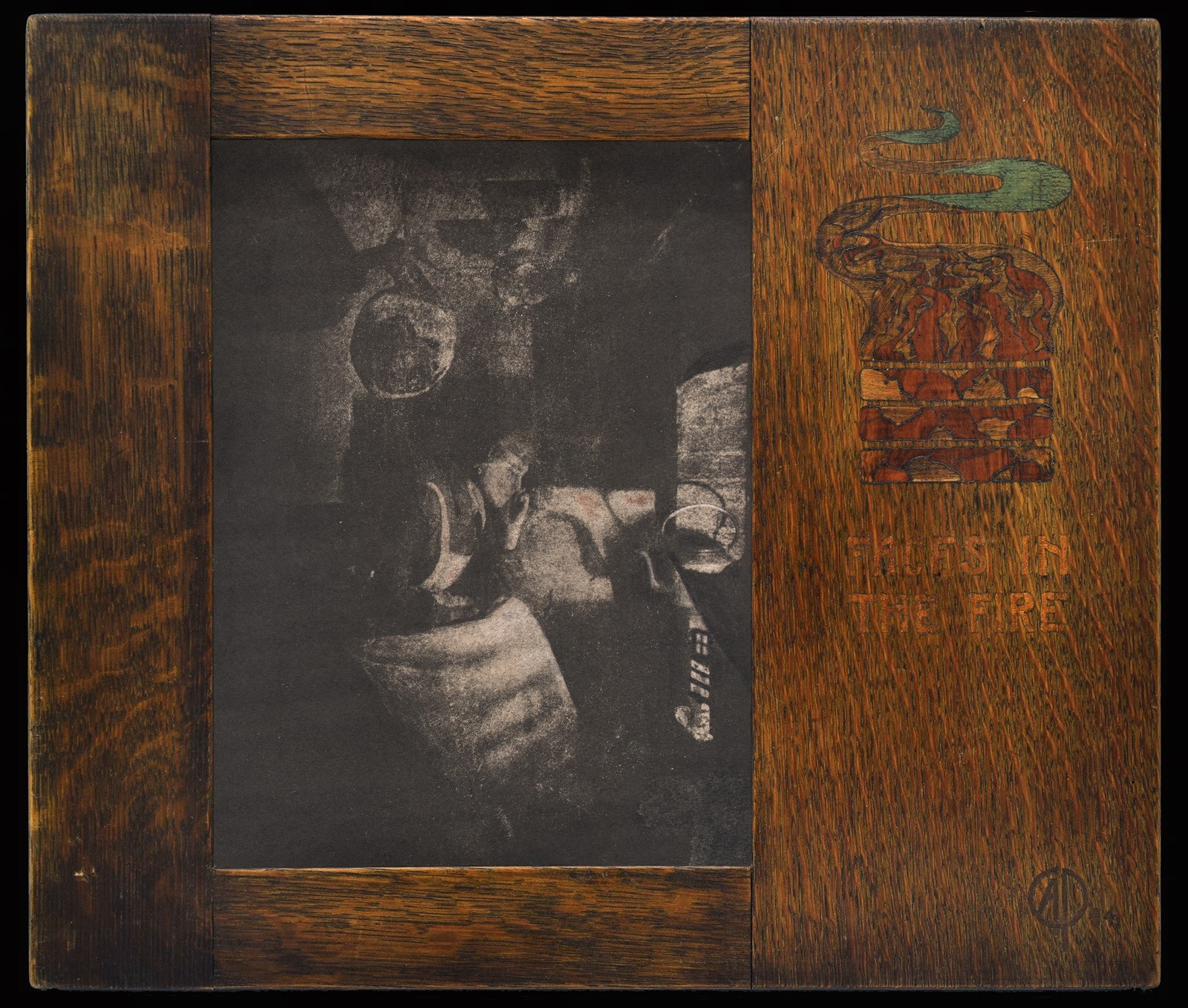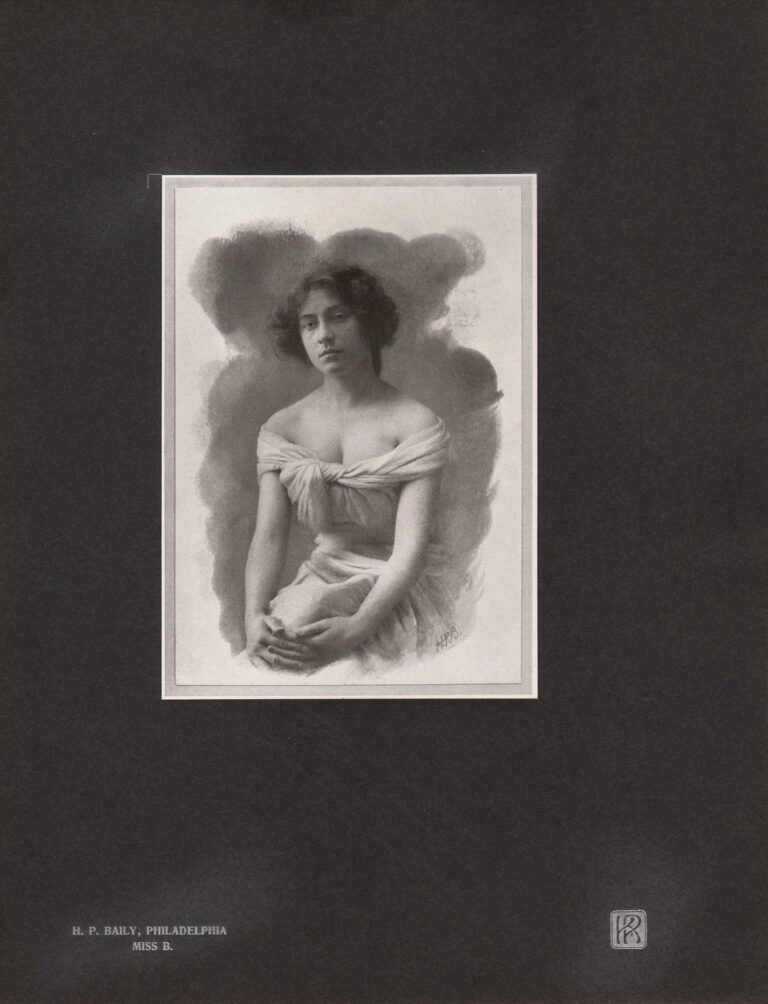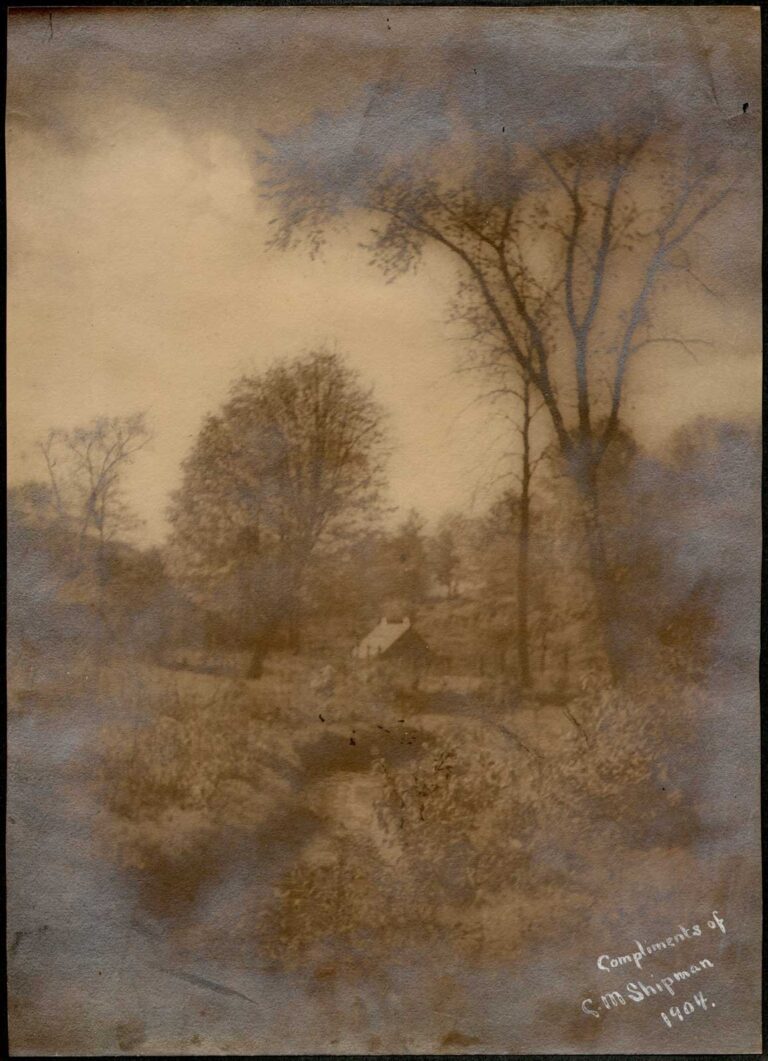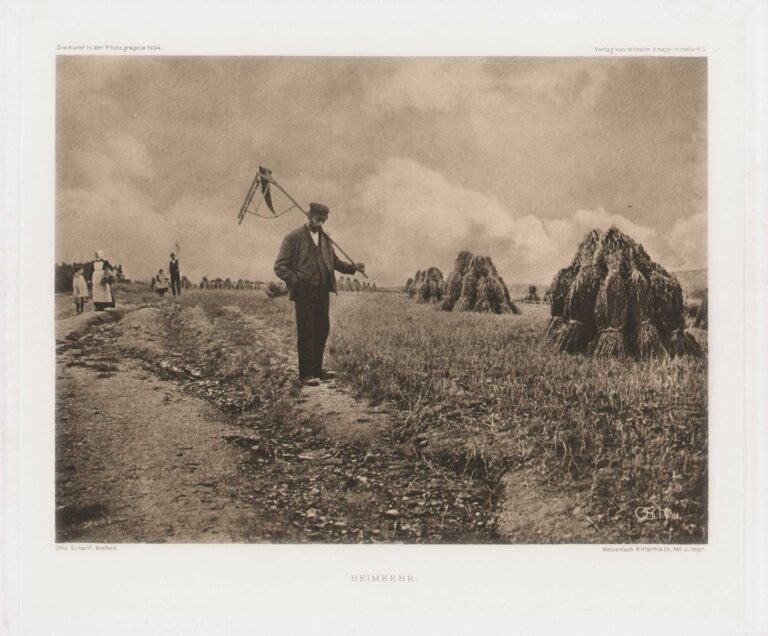
Faces in the Fire
C.A. Phipps, born ca. 1870 – died 1918? Birmingham England
With a large family that would eventually include nine other siblings, Charles A. Phipps was born to parents Walter and Ellen in Birmingham England around 1870. (1.) A lone reference to C.A. Phipps interest in amateur photography occurred in 1903, a year before this photograph was taken, when his surname is listed as a member of a founding committee:
A Photographic society has been formed for Small Heath. Dr. Frew was elected president; Messrs. George Bull and J. Dysart Bellman, vice-presidents; Mr. Charles F. Hayward, secretary and treasurer; and Messrs.(Alfred) Roffey, Rockett, Byfield, Thompson, Welburn, Phipps, and John J. Smith, the committee. (2.)
According to English census records, the photographer’s father held a variety of jobs in his youth including market gardener, gun rifler and florist, with Charles’ occupation when he was about 21 listed as “Florist Son”. Ten years later, in the 1901 Census for England and Wales, his occupation is now listed as “Designer Furniture”, an intriguing new vocation considering the evidence of this superb, custom made oak frame signed by the artist and dated three years later in 1904.
Done in true Arts & Crafts movement fashion, this three-section, lap-joined, quarter-sawn oak frame features an elaborate inset design done in wood marquetry with nine profile “faces” intermingling within “flames” set in the right frame stile. The inset gum print behind glass appears to be an older woman (perhaps the photographer’s mother Ellen?) shown in quintessential kitchen genre scene: apron-clad while seated and pondering life as she emerges from the shadows while bathed in light emanating from the open fireplace hearth, tea kettle at the ready.
In this same 1901 Census referenced earlier, Charles’ younger brother Percy has his occupation listed as “Art Metal Worker”, confirming the large occupational industry Birmingham residents were employed in at the turn of the 20th Century. Most likely affiliated with fellow workers in the Birmingham Guild of Handicraft, Charles’ skill as a furniture designer and his brother Percy’s efforts made them both fine unsung artisans elevating Birmingham’s reputation as a leading center of the arts in England at the beginning of the 20th Century.
In the entry for Art of Birmingham, Wikipedia states this major English city “has a distinctive culture of art and design that emerged in the 1750’s, driven by the historic importance of the applied arts to the city’s manufacturing economy.” Later, from the online resource: “Artist Biographies: British and Irish Artists of the 20th Century”, a broader definition for those like Charles Phipps working in the later Victorian era, and who most likely lacked any higher education but were gainfully employed as artisans can be found under the following listing:
Birmingham Group of Artist-Craftsmen
The Birmingham Group of Artist-Craftsmen, sometimes referred to as the Birmingham Group was an informal collective of painters and craftsmen associated with the Arts and Crafts Movement working in England’s second city in the late 19th and early 20th centuries. The majority of members either studied or were taught at the Birmingham School of Art and it was the School that formed the group’s principal focal point. Several members also overlapped with other more local formal organisations, including the Birmingham Guild of Handicraft, the Ruskin Pottery and the Bromsgrove Guild. The Group commenced its loose beginnings in the early 1890’s with several members being inclined towards the ideas and practices of John Ruskin and William Morris. Several had been commissioned by the Kelmscott Press, with Charles March Gere producing the famous frontispiece to ‘News from Nowhere’. Many, unable to support themselves solely through their art, also became fine crafts makers as well as teachers. (3.)
Print Notes, Recto: Several areas of retouching with black ink to fire grate at right margin, to subjects right arm, to former highlighted areas at lower right corner and along right margin in front of tea kettle. Frame: three-section, lap-joined, Quarter-sawn oak frame with inset glass; author attribution to lower right corner: CAP 04. (Charles A. Phipps) as a stylized inlaid marquetry monogram; marquetry title of work above: FACES IN THE FIRE; above this, an elaborate marquetry design of nine “faces” in profile intermingling with flames, also done in marquetry.
Frame Verso Notes: Original pasted white label (5.0 x 7.5 cm) intact with the following:
GUM BICROMATE (sic)
Title FACES IN THE FIRE.
CA PHIPPS
11 Marlborough Rd. Small Heath
Birmingham.
note: this label appears printed, although a close inspection reveals it most likely hand-drawn in black ink with exacting penmanship.
Known Provenance & Sales History: The artist; Bearnes Hampton & Littlewood auctioneers, Exeter England, December 2009, lot # 87; Bonhams London (Knowle), June 2010, lot #85; Hannam’s Auctioneers Ltd, Selborne England, January 2021, lot #4440.
Notes:
1. FamilySearch accessed January, 2022. 1901 Census; possible death record from 1918:
2. From: The Photographic News: London: April 17, 1903 issue, p. 250. The Small Heath Photographic Society eventually merged into the present-day Yardley Photographic Society.
3. Excerpt: Birmingham Group of Artist-Craftsmen: from: Artist Biographies: British and Irish Artists of the 20th Century online resource accessed 011522. Link.



